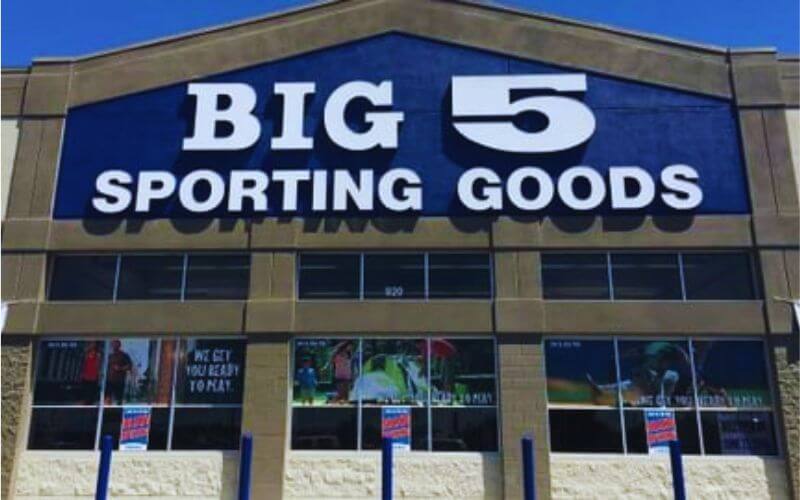Is Big 5 Sporting Goods going out of business? It’s a question many small business owners and loyal shoppers have been asking as headlines swirl. The simple answer is no Big 5 is not shutting down, but it is making a big change. The sporting goods staple recently agreed to be acquired and taken private by Worldwide Golf and Capitol Hill Group for about $112.7 million.
This deal moves Big 5 out of public markets and into private ownership. That can sound drastic, but the full story is less about an ending and more about finding the right path forward. If you’re running a retail business, or watch the sector closely, here’s how the Big 5 transition offers smart, practical lessons for navigating tough markets.
Financial Challenges: Dealing With Declines and Competition
Big 5 has weathered decades of economic highs and lows, but recent years hit especially hard. The company faces much of the same pressure many retailers feel: shrinking sales, rising costs, and mounting competition from online rivals. In Q1 2025, Big 5 reported a net loss of $17.3 million a sharp swing into the red. Same-store sales, a critical indicator of a retail chain’s health, dropped by 7.8%.
Why the decline? Operating largely in Western states especially California Big 5 remains exposed to shifting consumer habits in that region. Add in persistent inflation, higher interest expenses, and an aggressive push by e-commerce giants, and you see how even established brands can find themselves off balance. The response? Cut operational slack and minimize overhead.
Big 5 announced it will close up to 15 stores this year. Focus on the customers you already have before chasing new ones. If a location isn’t viable due to lower foot traffic or reduced local demand, consider consolidation to protect profitability.
Tip: Review your store-by-store profit and loss statements quarterly. Balancing scale with efficiency helps limit the risk from regional slowdowns.
Acquisition Details: A New Ownership Structure
To keep its doors open and its brand alive, Big 5 agreed to a merger with Worldwide Golf and Capitol Hill Group. The all-cash deal values the retailer at around $112.7 million. That figure also covers the assumption of the company’s outstanding credit borrowings. For shareholders, there’s a formal process: the transaction needs to clear regulatory approvals and win a shareholder vote.
The timeline matters. All current plans expect the deal to close in the second half of 2025. For now, Big 5 continues to run as usual. Expect little to change until the paperwork settles and ownership transfers.
Key takeaway: If you lead a business with real estate or inventory, proactive moves like this can secure survival even if they mean a big change in daily operations or public profile.
Transition Process: Going Private and Leaving Nasdaq
What does private ownership actually mean for a retail chain? Big 5 will delist from Nasdaq, where its shares have long traded, and become a private company. This change strips away the reporting requirements and quarterly earnings pressure of the public markets. For business leaders, this means breathing space for long-term planning and aggressive moves that Wall Street might second-guess.
Why does this matter? Public scrutiny and activist shareholders sometimes force rushed decisions. As you scale, your organizational structure may need to flex for new realities. For Big 5, operating as a private company lets leadership rethink everything from product mix to store count without worrying about short-term stock swings.
Did you know? Several distressed retailers in recent years have found stability and even growth once private. Going private removes a massive layer of distraction and lets operations take center stage.
Reasons for the Acquisition: Addressing Core Challenges
Why did Big 5 head for the sale route instead of staying the course? It’s a decision rooted in years of slow sales and tightening margins. Several critical challenges pushed leadership to search for outside help:
- Regional Concentration: With a focus on the American West, especially California, Big 5 faces significant exposure to just a few state economies. Regional specialization can create growth in good years but increases risk if local markets weaken.
- Outdated Strategy: Experts have pointed out that Big 5’s marketing and buying strategy lagged behind more digital-first, nimble competitors. Shoppers expect omnichannel convenience order online, pick up in-store. Brands slow to shift face an uphill battle.
- Rising Costs and Interest: Economic conditions proved merciless. When costs outpace revenue, and interest expense grows, even established brands can struggle to fund operations or invest in upgrades.
- Competition Pressures: Not only did bigger e-commerce companies seize market share, but regional chains with a tighter focus also pulled away loyal customers.
For any business facing similar stagnation, the lesson is clear. Review regularly where you’re exposed by geography, technology, or shifting consumer tastes and act early rather than waiting for a crisis.
Key takeaway: Sometimes, selling or merging lets you reposition for the future. This isn’t a failure, but a pragmatic way to reset and rebuild.
Impact on Customers: Stability First, then Gradual Change
If you shop at Big 5 or manage a similar retail operation, here’s what matters most: stores are not closing en masse, and the brand will stick around. The new owners Worldwide Golf and Capitol Hill Group intend to keep running most of the current 400+ locations.
At this stage, customers should see no big changes. Gift cards, returns, promotions, and loyalty programs all stay in place. Focus on the customers you already have before chasing new ones. Consistency supports customer trust, even through ownership transitions.
If you run a store or chain and face similar changes, prioritize regular, honest communication with your audience. Reassure them about what stays the same. Avoid jargon or vague promises. Instead, commit to service continuity and highlight how changes position you for future improvement.
Tip: Even if the back-end structure shifts, don’t tinker with the customer-facing experience until your core business stabilizes.
Lessons for Business Leaders: Practical Steps in Turbulent Times
- Monitor Key Metrics Ruthlessly: Focus on cash flow, customer retention, and profitability by location. Don’t be lulled by topline numbers or occasional peaks.
- Cut Losses Early: If a store or product line consistently underperforms, act swiftly. Strategic closures protect core strengths instead of dragging down the whole business.
- Communicate Openly: Keep staff and customers informed. Uncertainty kills morale and undermines confidence far faster than word of mouth.
- Balance Scale With Agility: As you grow or shrink, regularly check if your structure matches your market. Small, nimble operations react faster to change.
- Consider Strategic Partnerships: In Big 5’s case, a buyout offered the capital and expertise to survive. Alliances even with unexpected partners can unlock scale or new capabilities.
- Modernize Where Needed: As you face digital competition, invest where your customers want to interact with you be that modern e-commerce, flexible staffing, or omnichannel fulfillment.
Review regularly: Your strategy, your locations, and your customer promise. If something’s not working, admit it and try a new approach quickly.
Key takeaway: Don’t wait for a crisis. Early action, steady leadership, and clear metrics will always give you more options.
Why Big 5 Isn’t Going Out of Business? And What’s Next
Need the simple answer? Big 5 Sporting Goods is not going out of business. The brand stays, the stores stay open, and the management team gets a new mandate and resources for a turnaround.
The move to private ownership via acquisition points to a larger theme in retail: the value of restructuring before rumors or problems escalate. The best operators balance tradition (what made them strong) with the agility to pivot when the ground shifts. Whether you’re guiding a small local store or a nationwide chain, follow Big 5’s playbook: act fast, stay transparent, streamline operations, and seek help if needed.
If you want more practical examples and updates from similar transitions, check out Mega Business Journal for real stories and strategies that work across the industry.
For now, if you’re a Big 5 customer, expect business as usual. For those running businesses under pressure, let this transition remind you steady, practical moves beat sudden, reactionary shifts every time.
Conclusion
Big 5 Sporting Goods chose the difficult but practical option not liquidation or bankruptcy, but a shift to private ownership. The chain’s new structure is designed to create room for smart, customer-focused operations while removing the distractions of public markets. This isn’t the end of a well-known brand; it’s a clear-headed transition, with survival and long-term growth in mind.
Key takeaway: Whether you operate one store or several hundred, keep your plans honest, your numbers current, and your options open. Change, when handled deliberately, can protect both your legacy and your business’ future.
If you’re facing similar headwinds, focus first on the customers you already have. Review your operations regularly and don’t be afraid to bring in outside help or consider major structural moves before problems mount. This is how experienced operators build staying power in even the toughest climates.


